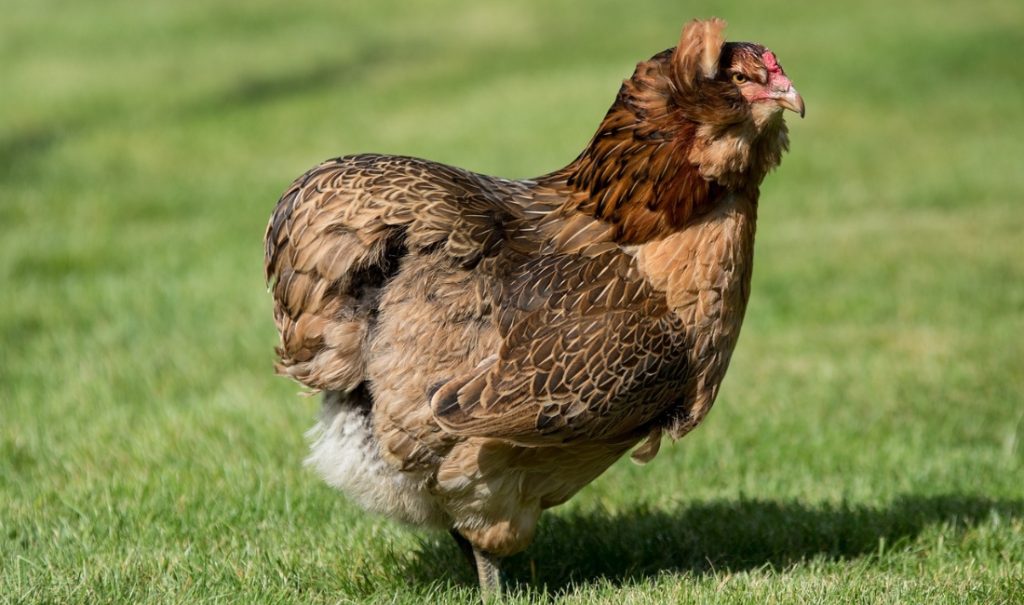The Araucana chicken is a unique breed that is known for things like its tufts of ears and its ability to lay beautiful blue eggs. People all over the world who like chickens are interested in this breed. But what’s so special about this chicken? Let’s talk about what makes the Araucana chicken special, where it comes from, and how to take care of it.

History of Araucana Chicken
A unique type of chicken called the Araucana lays blue eggs. Its ancestors came from the Mapuche people in Chile. The breed was first mentioned during the Spanish conquest in the early 1600s. It was known for having unique traits like no rump and feathered ear tufts. At the World’s Poultry Congress in Spain in 1921, Dr. Salvador Castello officially described the Araucana chicken. He said it came from the Mapuche people and was named after the Araucanian area.
The breed got even more attention in 1976 when the American Poultry Association (APA) officially recognized it. This set it apart from other blue-egg-laying chickens like the Ameraucana. The Araucana became more famous throughout the 20th century because of its unique looks and eggs. It is now a favorite among chicken lovers all over the world.
Physical Characteristics of Araucana Chicken
Ear tufts are one of the most noticeable things about the Araucana. They give the chicken a charming and unique look. A lot of Araucanas also don’t have tail feathers, called “rumplessness.” Because of these traits, they are easy to spot and set them apart from other breeds.
There are different colors of Araucanas, such as black, white, and blue. They are medium-sized birds that weigh about 4.5 to 5.5 pounds on average. They look nice because of their colored feathers and unique shape, whether you keep them for their eggs or as pets.
Is it because they lay blue eggs?
One interesting thing about the Araucana is that they can lay blue eggs. This one-of-a-kind trait comes from a genetic change that changes the color of the eggshell. Blue eggs have blue inside all the way through, while brown eggs only have brown on the outside.
Why the blue eggshell is good for you?
Blue eggs are not only pretty, but they are also useful. Their extra-thick shells keep germs out and make them last longer. Plus, their unique color makes any egg collection more interesting.
How do people act and behave?
People like Araucanas because they are calm and nice. Because they are calm, they make great pets and usually get along well with kids. Araucanas are usually easy to handle and like being around people, unlike some more flighty breeds.
The Easter Egger vs. the Araucana vs. the Ameraucana
The Easter Egger, the Araucana, and the Ameraucana are different breeds, even though they share the same name. But only the Araucana has both tufts on its ears and no back. The other two can lay blue or green eggs. People often mix up Araucanas with Ameraucanas and Easter Eggers, but their looks and ancestry are different.
Taking Care of an Araucana Chicken

Needs for Housing
Araucanas need normal chicken coops, but the air should be paid extra attention. They do best where it is clean and dry and there is lots of room to move around. Because they don’t have rumps, they are a little less quick, so it is best to give them low perches.
Food and nutrition
It’s the same as feeding Araucanas and feeding other chickens. A healthy meal with enough protein and calcium will help birds lay healthy eggs and have bright feathers. If you add oyster shells to their food, the eggs will be better, especially the highly sought-after blue eggs.
Getting Araucana chickens to breed
Breeding Araucanas can be satisfying and challenging. The dominant ear tuft gene can cause problems, so breeders need to be careful. Picking the healthiest birds with fully grown traits can help keep the lineage strong.
How many eggs does an Araucana Hen lay?
Araucanas are average egg-layers; they usually lay between 250 and 300 eggs a year. Although they may not lay as many eggs as other species, their blue eggs are more interesting and beautiful.
What Makes An Araucana a Great Pet?
People who love chickens should get an Araucana as a pet. People who keep chickens in their yards love them because they are friendly, easy to handle, and look different from other chickens. They also lay beautiful blue eggs, which is an added plus.
How do I take care of my Araucanas in the winter?
Araucanas do well in colder places, but they need more care in the winter. Providing them with a warm place to stay and bedding, as well as fresh air, will help them stay comfortable during the cooler months.
Conclusion
Araucanas are a special breed of dog with cute curls on their ears, bodies without rumps, and beautiful blue eggs. They’re handy, easy to take care of, and add some color to any group. There are many benefits to keeping Araucanas as pets, for eggs, or as part of a healthy farm.
FAQs
How can I tell if my chicken is an Araucana?
Look for critical traits like ear tufts, rumplessness, and blue eggs. Purebred Araucanas will have these defining characteristics.
Is Araucana Chicken good for egg production?
Yes, while they may not lay as many eggs as some other breeds, Araucanas produce beautiful, unique blue eggs, making them highly desirable.
Can Araucanas live in colder climates?
With proper care, Araucanas can adapt well to colder climates. Make sure they have adequate shelter and warmth during winter.
Does Araucana Chicken require special care?
They require typical chicken care but may need extra attention to ensure their ear tufts remain healthy. Otherwise, they are fairly low maintenance.
What’s the lifespan of an Araucana chicken?
Araucanas can live between 5 to 8 years with good care, sometimes longer if they are particularly well cared for.


